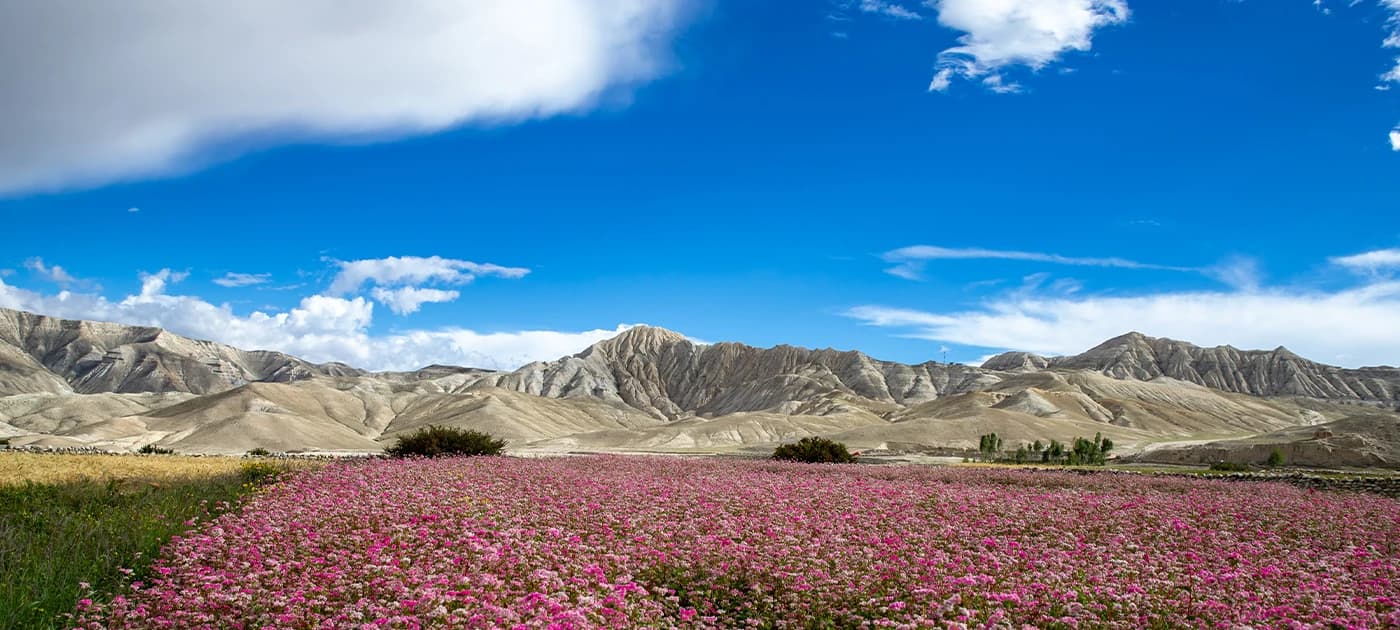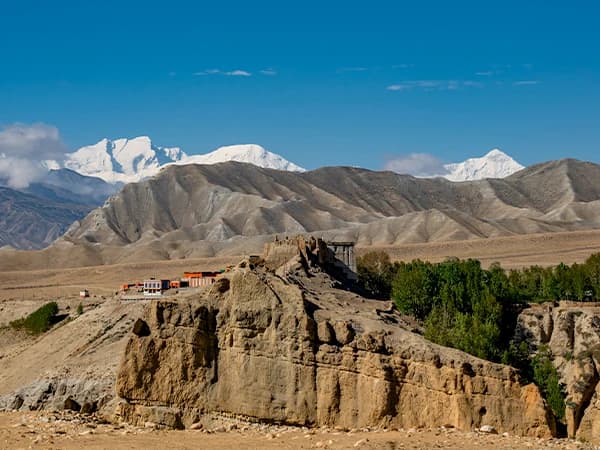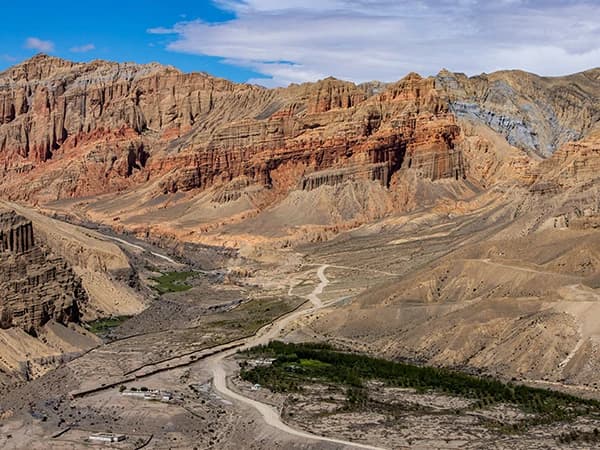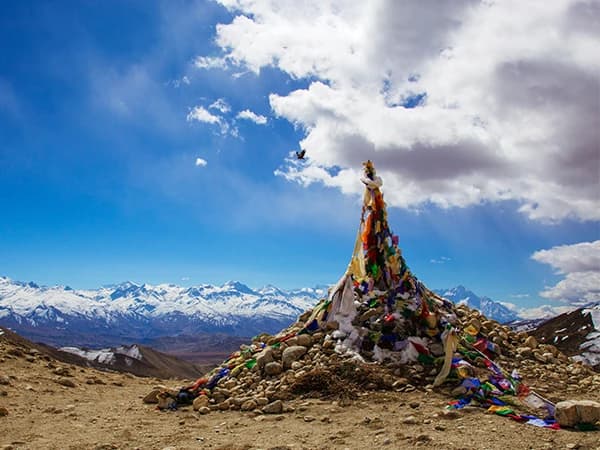The Mystical Kingdom Beyond the Himalayas
North of Nepal’s towering Himalayan peaks lies a world frozen in time, a land of wind-scoured cliffs, ancient traditions, and profound spirituality. This is the Mustang region, a remote and mystical land that was once the independent Kingdom of Lo. For centuries, its isolation created a unique cultural sanctuary, preserving a way of life that remains deeply connected to its Tibetan roots. The region’s name itself, Mustang, is derived from the Tibetan mun tang, meaning "fertile plain," a name that now stands in stark contrast to its arid, barren landscape and a powerful testament to its dramatic geological history.
A Land Forged by Glaciers and Rain Shadow
The Mustang region is a prime example of the High Mountain Valleys (or Inner Himalaya) found north of the high Himalayas, just before the Plateau of Tibet. These valleys, such as the Upper Kaligandaki, lie between 1,970 and 4,500 meters. They are typically oriented east-west, cradled by towering mountains and scoured out by ancient glaciers that have long since retreated. The high Himalayas act as a formidable barrier, blocking the northern advance of the summer monsoon. Consequently, the High Mountain Valleys of Mustang lie in a significant rain shadow, making them barren and arid landscapes. This stark, dramatic environment has profoundly shaped the culture, people, and resilience of the region.
A Living History: The Ancient Kingdom of Lo
Mustang's history is inextricably linked to Tibet. The region was established as the independent Kingdom of Lo in the 15th century by Ame Pal, a Buddhist warrior. Its capital, the walled city of Lo Manthang, stands as one of the best-preserved medieval fortresses in the world. For over 600 years, the kingdom maintained its own language, customs, and royal lineage, a testament to its isolation. While it was formally annexed by Nepal in the late 18th century, the cultural influence of Tibet remained dominant, and a local king continued to rule until the late 2000s, cementing its unique status as a "kingdom within a kingdom."
A Tapestry of Bon and Buddhism
The people of Mustang, known as the Loba, have a culture and spiritual life unlike anywhere else in Nepal. Their religion is a captivating blend of two ancient traditions:
- Bon: An ancient animistic religion of Tibet that predates the arrival of Buddhism. Bon is based on the veneration of nature and spirits, and its traditions are still practiced in Mustang today, often coexisting with Buddhist rituals.
- Tibetan Buddhism: The dominant religion of the region is a form of Tibetan Buddhism, which arrived with the influence of great masters. Monasteries, chortens, and prayer flags are ubiquitous, and the region is home to some of the oldest and most important Buddhist sites, including the revered Thubchen and Jampa Gompas in Lo Manthang.
The blend of these two faiths has created a unique spiritual landscape, where ancient Bon spirits are sometimes invoked alongside Buddhist deities in daily prayers and ceremonies.
Festivals and Traditions
Mustang's festivals are vibrant celebrations that showcase the deep-rooted traditions of the Loba people. The most famous is the Tiji Festival, a three-day event held annually in Lo Manthang. It symbolizes the triumph of good over evil and features elaborate masked dances performed by monks, reenacting the story of a deity who saves the kingdom from destruction. This festival is a spectacular display of devotion, community, and ancient folklore, drawing visitors from around the world.
From its stark, wind-swept geography to its preserved culture and rich spiritual heritage, Mustang is a region that defies easy categorization. It is a place where history is not just read in books but is lived in every stone house, every festival dance, and every prayer flag that flutters in the thin, arid air.



